Short Notes: Unit 3: Supply | Business Economics for CA Foundation PDF Download
| Table of contents |

|
| Introduction |

|
| Determinants of Supply |

|
| Law of Supply |

|
| Movements vs. Shifts in Supply Curve |

|
| Elasticity of Supply |

|
| Equilibrium Price |

|
Introduction
Supply is an important part of economics. It means how much of a good or service sellers are willing and able to sell at different prices during a certain time. Sellers can be individuals, companies, or even the government. Usually, when the price of a product goes up, sellers want to sell more because they can earn more profit. Supply helps us understand how goods reach the market and how prices are decided. It also plays a big role in planning production and managing resources.
Key Points:
- Supply is what is offered, not necessarily sold.
- Requires both willingness and ability to supply, influenced by production costs.
- A flow concept, measured per unit of time (e.g., per day, week, or year).
Determinants of Supply
Supply is influenced by several factors beyond the price of the good itself: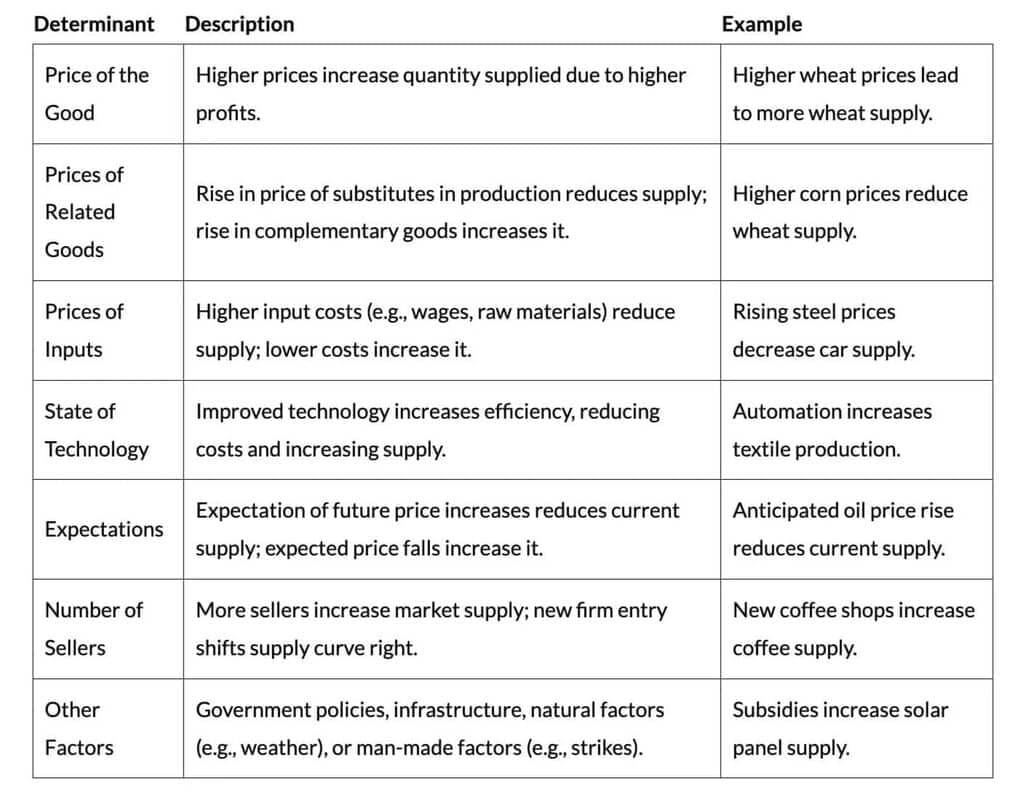
Law of Supply
The law of supply states that, ceteris paribus, as the price of a good rises, the quantity supplied increases, and vice versa, due to the profit motive.
Note: Supply depends on price and production costs. The greater the difference between price and cost, the higher the willingness to supply.
Supply Schedule Example (Good X):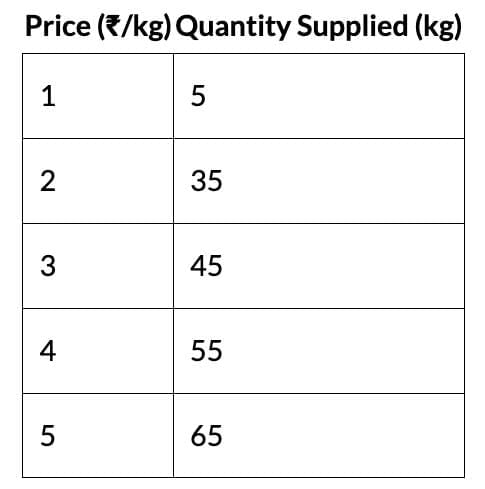
 Upward-sloping supply curve showing positive price-quantity relationship.
Upward-sloping supply curve showing positive price-quantity relationship.
Market Supply: Sum of individual firms' supplies at each price, derived by horizontally adding individual supply curves.
Movements vs. Shifts in Supply Curve
Movement Along Supply Curve: Caused by a change in the good's own price, leading to an increase (expansion) or decrease (contraction) in quantity supplied.
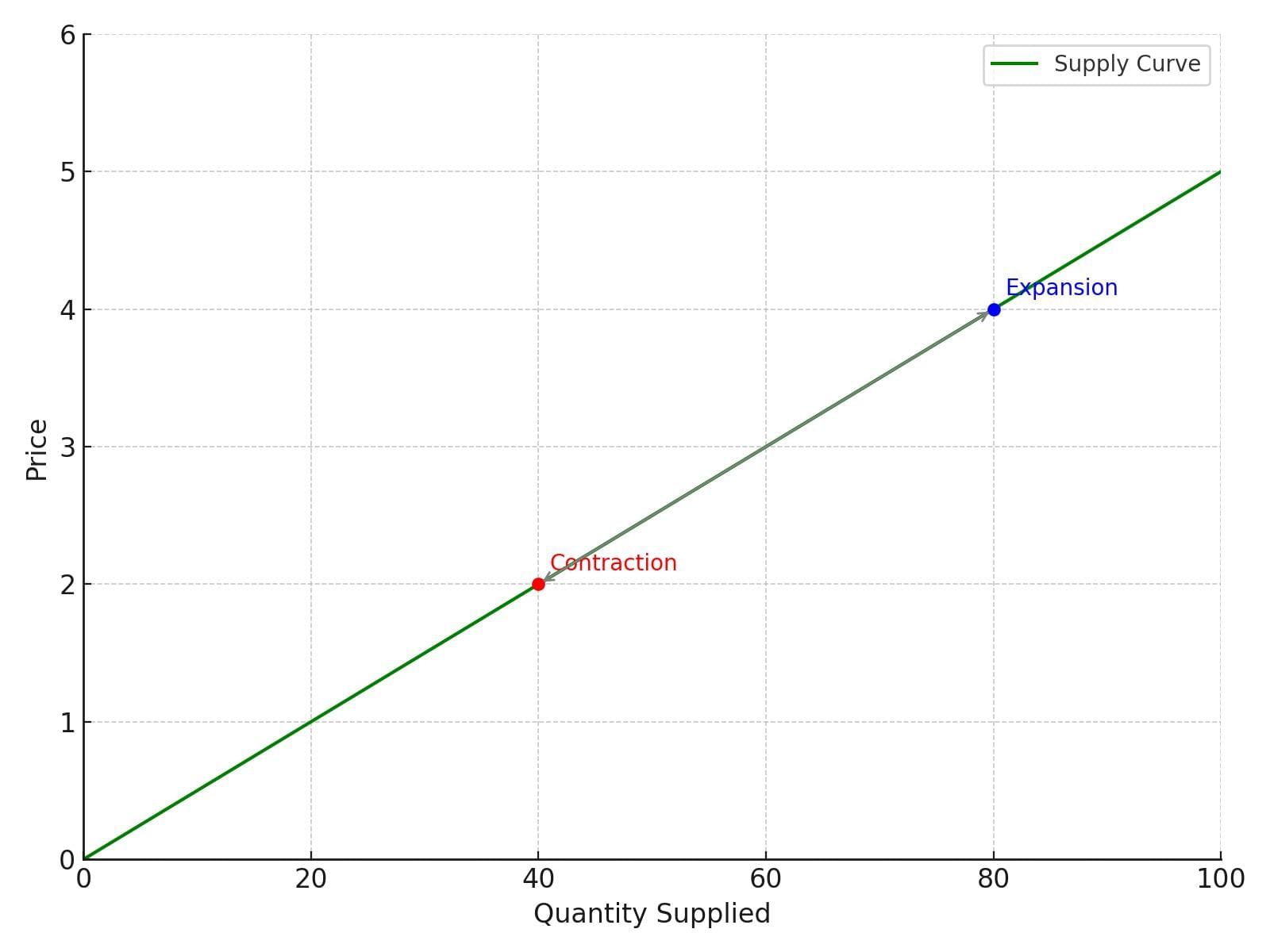 Upward movement (expansion) or downward movement (contraction) due to price change.
Upward movement (expansion) or downward movement (contraction) due to price change.
Shift in Supply Curve: Caused by changes in non-price determinants, shifting the curve right (increase in supply) or left (decrease in supply).
 Right shift (increase) at price P from Q to Q1; left shift (decrease) from Q to Q1.
Right shift (increase) at price P from Q to Q1; left shift (decrease) from Q to Q1.Elasticity of Supply
Elasticity of supply (Es) measures the responsiveness of quantity supplied to a change in price.
Formula: 


Example: Price of good X rises from ₹2000 to ₹2100, quantity supplied rises from 2500 to 3000 units.
Es = (500/2500) / (100/2000) = 0.2 / 0.05 = 4 (elastic).
Types of Supply Elasticity: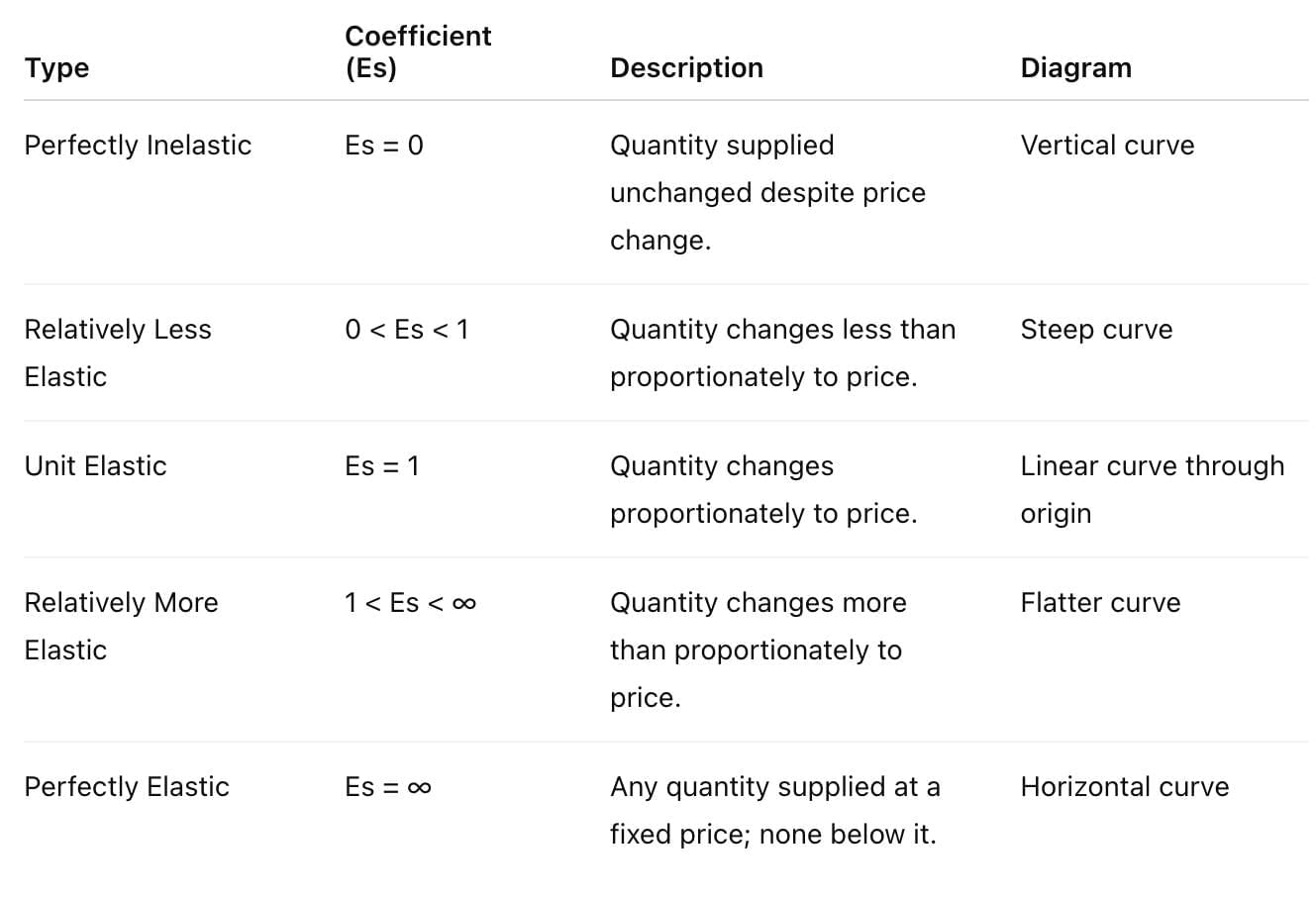
Determinants of Elasticity:
- Cost Changes: Low cost increases yield elastic supply; high costs make it inelastic.
- Production Complexity: Complex processes (e.g., aircraft) have lower elasticity.
- Time Period: Longer periods increase elasticity as firms adjust.
- Number of Producers: More producers and competition increase elasticity.
- Barriers to Entry: Fewer barriers increase elasticity.
- Spare Capacity: Excess capacity increases elasticity.
- Input Availability: Easy access to inputs increases elasticity.
- Factor Mobility: Mobile capital/labor increases elasticity (e.g., printing press switching products).
- Price Expectations: Expected future price rises reduce current elasticity.
Measurement:
- Point Elasticity:
 Example: Supply function Q = -100 + 10P, at P = ₹15, Q = 50. Es = 10 × (15/50) = 3.
Example: Supply function Q = -100 + 10P, at P = ₹15, Q = 50. Es = 10 × (15/50) = 3. - Arc Elasticity:

Example: P₁ = ₹12, Q₁ = 20; P₂ = ₹15, Q₂ = 50. Es = (30/70) / (3/27) = 3.86.
Equilibrium Price
The equilibrium price (market-clearing price) is where quantity demanded equals quantity supplied, determined by the intersection of demand and supply curves.
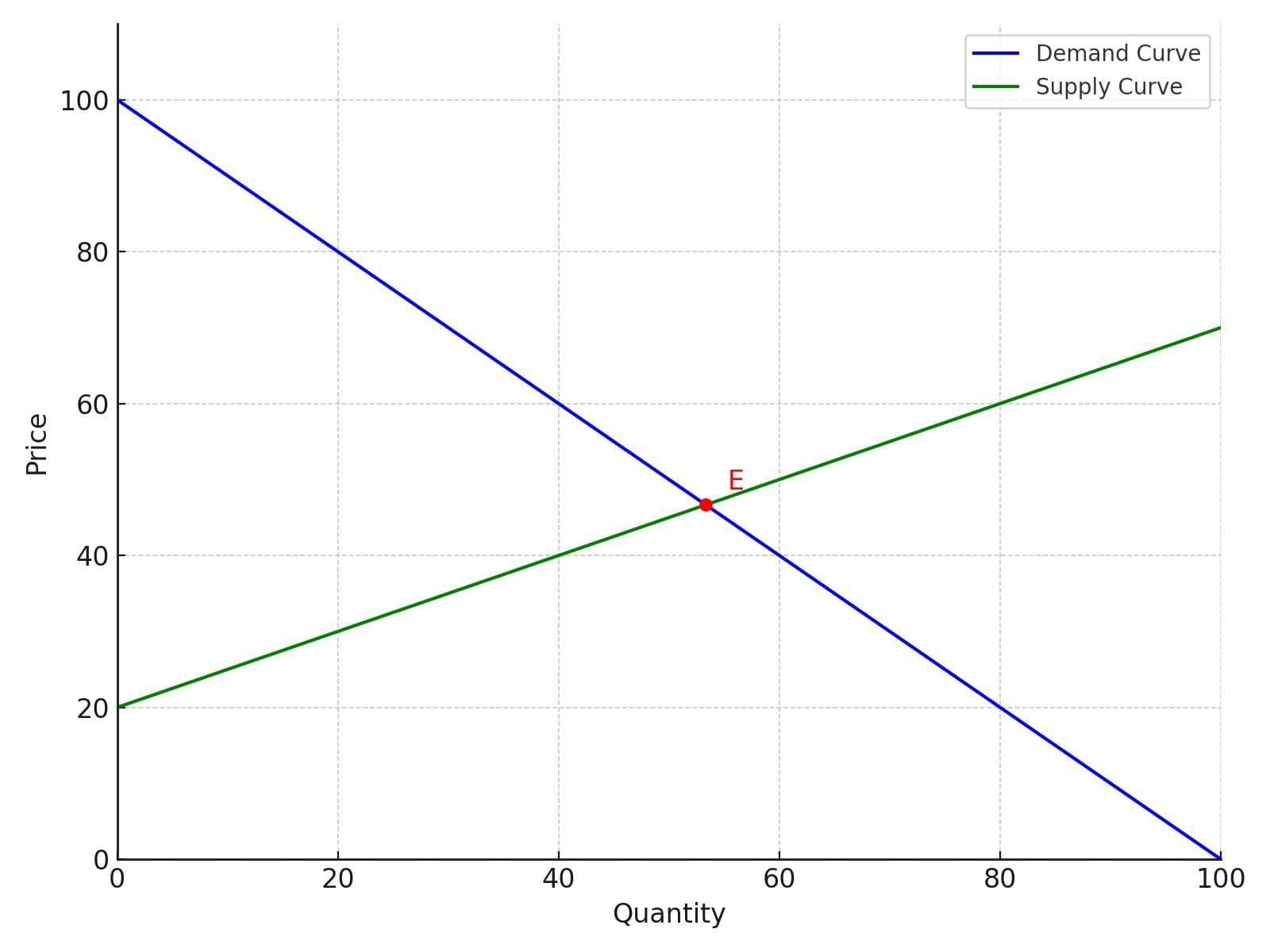 Equilibrium at intersection of demand and supply curves.
Equilibrium at intersection of demand and supply curves.Social Efficiency: At equilibrium, social surplus (consumer surplus + producer surplus) is maximized.
- Consumer Surplus: Difference between willingness to pay and actual price paid.
- Producer Surplus: Difference between price received and minimum price producers accept.
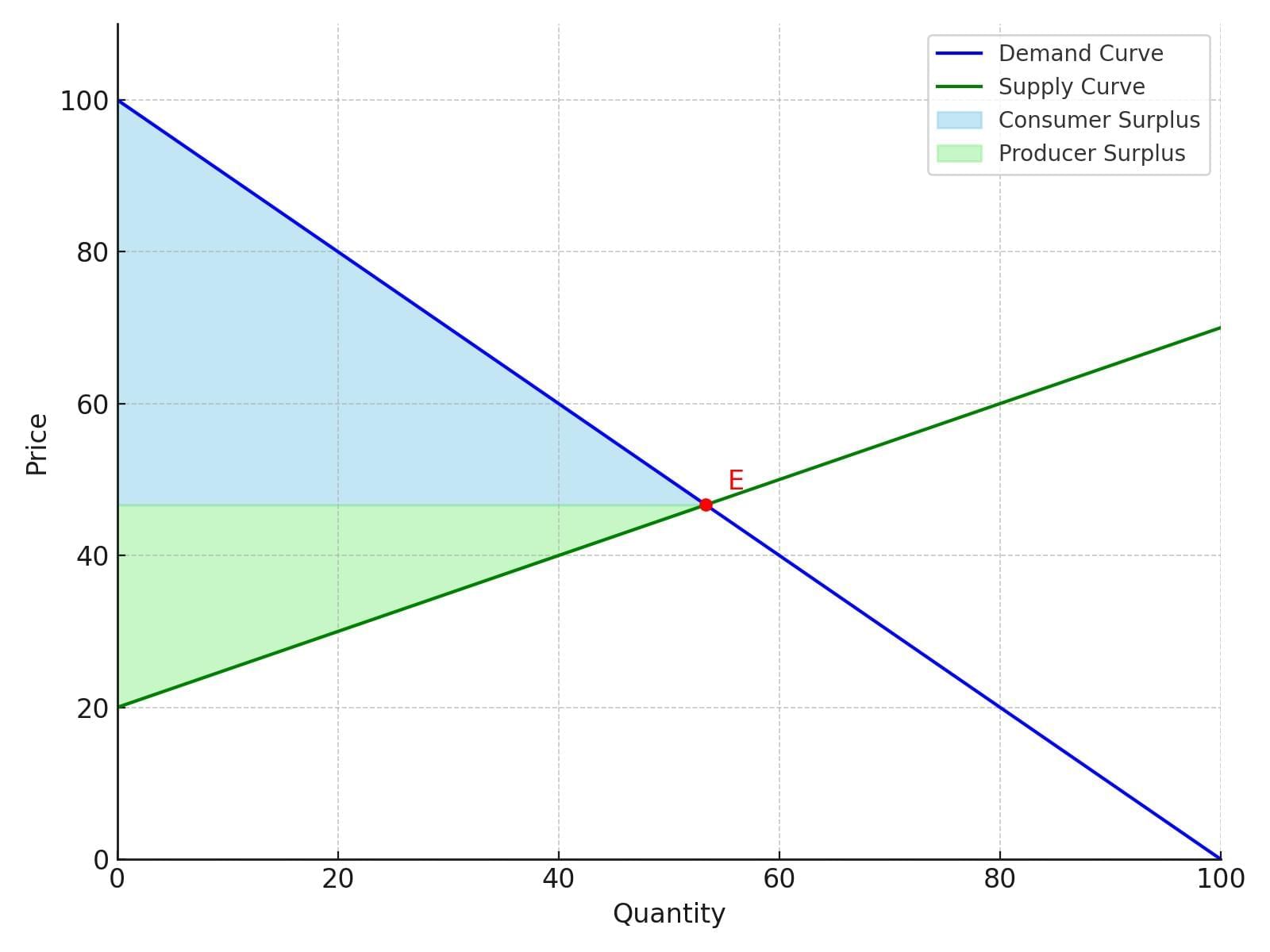 Social efficiency with maximum consumer and producer surplus at equilibrium.
Social efficiency with maximum consumer and producer surplus at equilibrium.|
86 videos|200 docs|58 tests
|
FAQs on Short Notes: Unit 3: Supply - Business Economics for CA Foundation
| 1. What are the main determinants of supply? |  |
| 2. How does the law of supply operate in a market economy? |  |
| 3. What is the difference between movements along the supply curve and shifts in the supply curve? |  |
| 4. What does elasticity of supply mean, and why is it important? |  |
| 5. How is equilibrium price determined in a market? |  |















